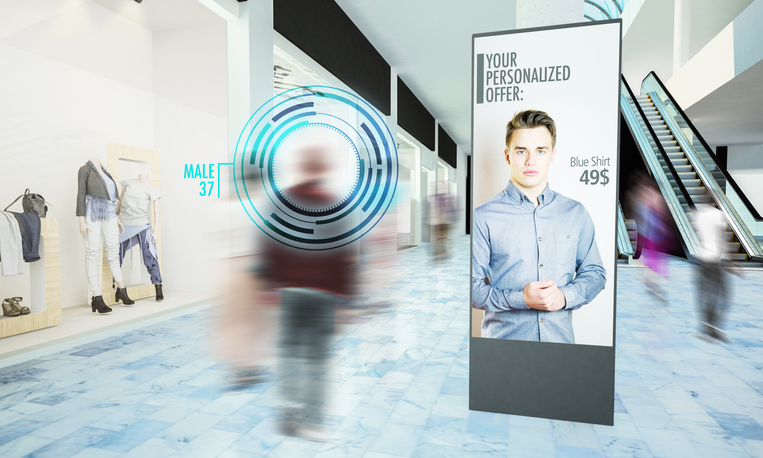There have been a number of challenges and opportunities in AI that have continued to push the evolution of retail. Mobile technology, speed of service and delivery and low prices are just the tip of the iceberg.
In recent discussions with a variety of retailers and retail analysts in Australia and New Zealand, the adoption of artificial intelligence (AI) and machine learning (ML) is high on everyone’s wish list to generate further efficiencies across the retail enterprise. The question is whether to build an AI/ML engine themselves or turn to a specialised software company already operating in the AI/ML space.
Consumers want their product and they want it now – in their size, flavour, length, shape, brand, weight. If you don’t have it, they’ll shop elsewhere.
Personalisation and customer centricity are often quoted as the way to compete. But when trying to manage labour costs, inventory, supplier compliance and competitive pressures, all from legacy software systems that IT departments are stretched to maintain, the necessary information and systems to serve the consumer consistently across all channels may not always be available.
Where AI/ML drives the value into retail is in the number of calculations it can perform, over vast amounts of data, drawing correlations between the data points and subsequently providing recommendations or actions on the pattern detections – the number crunching can be extreme and as such, is generally only commercially viable when deployed in an elastically scalable cloud environment. Added to this, as more data is accumulated over time and the AI/ML engine can then measure the results of prior predictions (i.e. learn), it becomes even more accurate (i.e. self-aware).
What was less clear in the discussions with ANZ retailers on the AI/ML front was identifying a specific use case that delivers an outcome and the biggest bang for buck. What was consistent in those meetings is that a focus on a positive outcome for the consumer was a high priority, whether that was:
- Being able to direct an in-store customer to the right location within the store to find what they’re looking for and confirm with the customer that there was in fact inventory available before sending them on their hunt, and if the product was not in-stock, was there an appropriate substitute, or another nearby location that could fulfil the request
- Increasing Supply Chain efficiency based on:
- Vastly improved accuracy of future demand for each item at each location, factoring in promotions/halo/cannibalisation, causal events, demographic data, weather forecasts – the days of “clustering” should rightfully be gone
- Choosing the right supplier/manufacturer who will deliver the product on time, in the right quantities, at the optimal cost, to the warehouse, store or direct to consumer
- Reducing store and warehouse staff labour costs by optimising the staff schedules to calculated demand (sales and inventory flow) – subsequently passing on lower operating costs for the consumer
- Delivering relevant analytical insight to business users alerting them to deviations beyond tolerances and taking actions on their behalf
- Providing chatbots, both to the consumer and staff, that allow an ease of access to information and action such as “I want to cook roast lamb tonight, order the ingredients for pickup on my way home from work”
- Fraud detection identifying problematic supply chain issues, and/or, stores/registers/time of day to reduce shrinkage
- Pricing/promoting an item that will maximise the margin and hit sell through rates
The above challenges have traditionally been met by staff with deep experience and knowledge, basic forecasting/optimisation or the good old “gut feel”, with varying levels of success but all leaving room for improvement to better serve the customer while reducing costs.
These challenges are being tackled by software companies today leveraging AI and ML algorithms – some more successfully than others, and some just bandying about the terms without any evidence of delivery. What retailers must do is find a strategic partner that will listen and collaborate on a strategy that can addresses their biggest pain points to deliver the bottom line results.
Businesses should be looking for the following in a partner:
- Providing a solution that can increase the accuracy in predicting demand curves and subsequently increasing consumer service levels while decreasing inventory levels, with far superior results compared to traditional forecasting solutions
- The ability to optimise labour schedules in conjunction with local labour laws / enterprise bargaining agreements
- AI that can improve data quality and business analytics by ‘filling in the gaps’ on data that is incomplete to increase the relevancy and accuracy of decision support tools
- Solutions that integrate AI with asset management and Internet of Things (IoT) to predict maintenance needs to avoid/minimise equipment failure that may impact the stores or supply chain
Will this be the year we see AI/ML kick into gear and starting to flourish in retail? I expect most retailers will commence their AI/ML strategy in some capacity this year and given the speed to market urgency, that they will engage software vendors experienced in this sector. Whether that’s a focus on improved ERP efficiency, supply chain optimisation or customer information/experience, every retailer can benefit from this adoption.
By Brett Egglestone, VP of Retail at Infor Pacific

